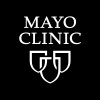
Comparing Laparoscopic and Open Pancreaticoduodenectomy for Nonpancreatic Periampullary Adenocarcinomas...
Periampullary AdenocarcinomaThe aim of this study was to evaluate the outcomes of LPD versus OPD in non-pancreatic periampullary adenocarcinoma

A Phase I/II Study of VLS-1488 in Subjects With Advanced Cancer
Advanced Solid TumorHigh Grade Serous Adenocarcinoma of Ovary14 moreThis is a first-in-human phase I/II study to examine the safety, tolerability and preliminary efficacy of VLS-1488 in subjects with advanced cancers.

Biomarker Analysis of Anti-PD-1 Antibody Combined With Chemotherapy for Neoadjuvant Treatment of...
Locally Advanced Gastric AdenocarcinomaPD-1G/GEJ adenocarcinoma is one of the most common malignant tumors in China, ranking the fifth highest incidence and third highest mortality worldwide. Currently, surgical resection is the preferred treatment for G/GEJ adenocarcinoma, while the 5-year survival rate of patients is lower than 25%. Compared with surgical resection, immunotherapy is proved to be able to effectively prolong the survival time of patients. On one hand, with the continuous promotion of immunotherapy drugs, the exploration of neoadjuvant application of immunotherapy in G/GEJ adenocarcinoma has become a hotspot in recent years. It's also on their way that clinical trials of programmed death receptor-1 (PD-1), programmed death ligand-1 (PD-L1) and other immune checkpoints are carried out. On the other hand, the research found that although the curative effect of immune therapy seems better, the present G/GEJ adenocarcinoma immunotherapy marker researches mainly focused on the late stage of the cancer, with few studies of immune markers of neoadjuvant therapy for G/GEJ adenocarcinoma. Additionally, it's not quite feasible for single biomarkers to predict the immune treatment effect precisely. Therefore, combined with clinicopathology and therapeutic effects, this study is aimed to construct the efficacy prediction model of anti-PD-1 antibody together with chemotherapy for G/GEJ adenocarcinoma, by detecting patients' DNA mutation and RNA expression.

Safety, Tolerability, and Efficacy of mFOLFIRINOX ± BNT321 as Adjuvant Therapy Following Curative...
Pancreatic CancerThis trial is designed as a Phase I/randomized Phase II open-label trial of modified(m) FOLFIRINOX ± BNT321 for adjuvant therapy in pancreatic ductal adenocarcinoma (PDAC) patients post R0 or R1 resection. The Phase I, dose escalation part of this trial will be a limited evaluation of two planned BNT321 dose levels in combination with mFOLFIRINOX chemotherapy (24 weeks) followed by BNT321 monotherapy (24 weeks). Following determination of the combination recommended Phase II dose (RP2D), the Phase II (randomized treatment) part of this trial will be initiated as an open-label 2-arm evaluation of mFOLFIRINOX ± BNT321 (24 weeks) followed by BNT321 monotherapy (24 weeks) in the combination arm only to complete the adjuvant therapy course. Treatment cycles are every 2 weeks (14 days).

Preoperative Hypofractionated Radiotherapy With FOLFOX for Esophageal or Gastroesophageal Junction...
Clinical Stage I Esophageal Adenocarcinoma AJCC v8Clinical Stage I Gastroesophageal Junction Adenocarcinoma AJCC v84 moreThis phase II trial tests how well preoperative (prior to surgery) radiation therapy with fluorouracil, oxaliplatin, and leucovorin calcium (FOLFOX) works for the treatment of stage I-III esophageal or gastroesophageal junction adenocarcinoma. Hypofractionated radiation therapy delivers higher doses of radiation therapy over a shorter period of time and may kill more tumor cells and have fewer side effects. Fluorouracil stops cells from making deoxyribonucleic acid (DNA) and it may kill tumor cells. Leucovorin is not a chemotherapy medication but is given in conjunction with chemotherapy. Leucovorin is used with the chemotherapy medication fluorouracil to enhance the effects of the fluorouracil, in other words, to make the drug work better. Oxaliplatin is in a class of medications called platinum-containing antineoplastic agents. It damages the cell's DNA and may kill tumor cells. Giving preoperative hypofractionated radiation with fluorouracil and oxaliplatin may kill more tumor cells in patients with stage I-III esophageal or gastroesophageal junction adenocarcinoma.

Surgery and Thermal Hepatic Ablation Combined With Chemotherapy in Hepatic Oligometastatic Pancreatic...
Pancreatic Ductal AdenocarcinomaThe goal of this clinical trial is to compare the overall survival of thermal ablation combined with chemotherapy and chemotherapy alone in the patients with liver oligometastasis after pancreatic ductal adenocarcinoma (PDAC) surgery. The main question it aims to answer is: whether thermal ablation combined with chemotherapy can effectively prolong the overall survival in the patients with liver oligometastasis after pancreatic ductal adenocarcinoma (PDAC) surgery. The participants in the treatment group will receive systemic chemotherapy combined with liver thermal ablation, while the participants in the control group will receive chemotherapy alone. All participants will be followed up to evaluate the overall survival after treatment.

Serplulimab Combined With Anti-VEGF Antibody in Advanced Lung Adenocarcinoma
Lung AdenocarcinomaStage IV Non-small Cell Lung Cancer2 moreIn order to further evaluate the efficacy of immunotherapy combined with antivascular therapy in the real world, we used Serpluimab combined with Bevacizumab and platinum-based chemotherapy in previously untreated EGFR/ALK-negative advanced non-squamous NSCLC patients, to evaluate the efficacy and safety of this regimen.

Preoperative Evaluation of Lymph Nodes of Cholangiocarcinoma
Hilar CholangiocarcinomaIntrahepatic Cholangiocarcinoma3 moreThe goal of this observational cohort study is to assess the yield of preoperative endoscopic ultrasound focussed on lymph nodes in patients with presumed resectable perihilar (pCCA), intrahepatic (iCCA) or mid-common bile duct (CBD) cholangiocarcinoma. The main questions it aims to answer is: The number of patients precluded from surgical work-up due to positive regional or extraregional lymph nodes identified by endoscopic ultrasound guided tissue acquisition Characteristics during endoscopic ultrasound of lymph nodes associated with malignancy

Two-fraction HDR Monotherapy for Localized Prostate Cancer
Prostate AdenocarcinomaLocalized Prostate CarcinomaThis is a single center single arm prospective pilot study investigating the safety of high dose rate (HDR) brachytherapy as monotherapy delivered in 2 fractions 3 hours apart. HDR monotherapy has been established as safe and effective in this context, however previous studies have delivered 2 fractions on separate days, or at least 6 hours apart. Clinically, this regimen, if shown to be safe and effective in future studies, has the potential to reduce operative resources and logistical stresses on brachytherapy departments.

Prospectively Defining Metastatic Pancreatic Ductal Adenocarcinoma Subtypes by Comprehensive Genomic...
CancerPancreatic CancerResearchers are looking for better ways of understanding and treating pancreatic cancer. The purpose of this study is to see how useful it is to look for changes and characteristics in your genes (molecules that contain instructions for the development and functioning of the cells) and the genes within the tumour. These characteristics may be useful in choosing treatments for patients in the future. Changes (mutations) in genes have been shown to be an important characteristic in cancers. Looking at differences in genes in patients with advanced pancreatic ductal adenocarcinomas and comparing this information with response to their initial chemotherapy treatment may help to learn which treatments may be better for certain patients after initial treatment.
